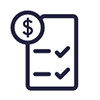Ready to take charge of your finances and work towards a financial future you’re excited about? To get started, it’s a good idea to create a budget. The good news is that you can tailor your budget to what works best for you.

Budgeting 101: Creating a Budget
8 min read
Last Updated: December 10, 2024
Next steps

See if you're pre-approved

View all Discover credit cards
See rates, rewards and other info
You may also be interested in
Was this article helpful?
Was this article helpful?




